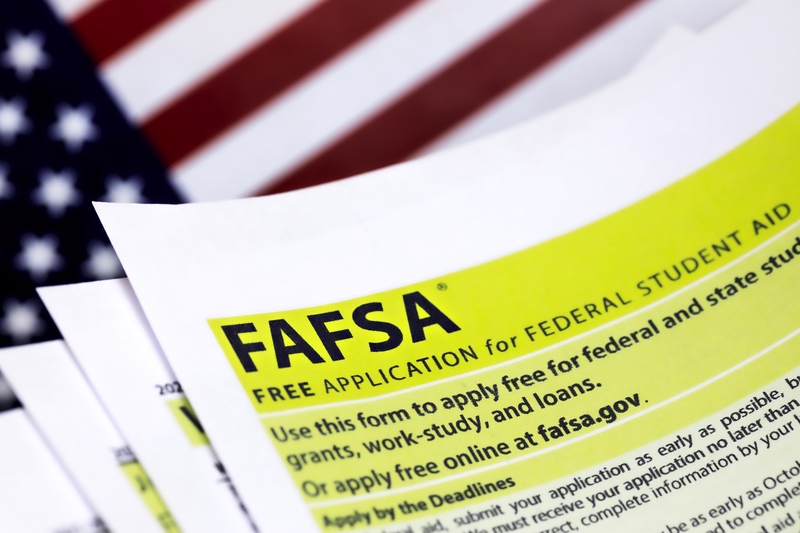Understanding the FAFSA and its Role in Financing Education

If your student is planning to attend college, chances are you’ve heard of the FAFSA — the Free Application for Federal Student Aid. Using it to apply for aid can sometimes make higher education more accessible and affordable, yet many students and families find the process intimidating or even overlook it altogether. Here’s an overview of what the FAFSA is, how it works, and why completing it can be a game-changer for a student’s academic journey.
What Is the FAFSA?
The FAFSA is a government form that determines your family’s eligibility for need-based financial aid from the federal government, including grants (money you don’t pay back), loans, and work-study opportunities. Many colleges also use FAFSA data to award their own need-based aid, scholarships, and grants. By completing the FAFSA, you provide colleges a snapshot of your family’s financial situation, which helps them understand how much assistance your student may need to afford the cost of attendance, which includes tuition, room and board, student fees, and other college expenses.
Why Is the FAFSA Important?
If you are eligible for aid, filling out the FAFSA can unlock thousands of dollars in financial assistance, making college more affordable than it might initially appear. Here are a few reasons why completing the FAFSA can be important:
1. Access to Free Money: Grants and Scholarships
Federal grants, such as the Pell Grant, are based on financial need and don’t have to be repaid. Additionally, many colleges and private organizations use FAFSA information to determine eligibility for scholarships, which, like grants, don’t have to be repaid. Households with incomes between zero and 175% to 400% of the poverty line are likely to qualify for a Pell Grant.
2. Federal Loans with Favorable Terms
If you need to borrow money to help pay for college, federal student and/or parent loans are often the best option. They typically offer lower interest rates and more flexible repayment options compared to private loans. The FAFSA is a gateway to these loans. Be aware, however, of the difference between subsidized and unsubsidized loans.
3. Work-Study Opportunities
The FAFSA also determines a student’s eligibility for the federal work-study program, which allows students to earn money through part-time jobs on or near campus. This can help offset college costs while gaining valuable work experience.
4. State and Institutional Aid
Many states and schools have their own financial aid programs, and most require the FAFSA to award funds. Even if you think you may not qualify for federal aid, submitting the FAFSA ensures you’re considered for all possible resources. (See more below about whether you should submit a FAFSA.)
5. Merit Aid
A few colleges require families to complete the FAFSA for some of their merit scholarships. Please see each college’s individual website for more information. Please note, you are able to complete the FAFSA and later choose which schools you will submit the information to.
When and How to Fill Out the FAFSA
The FAFSA application opened on November 21 this year, and deadlines vary depending on the college, state, and federal programs. Submitting the form as early as possible ensures students don’t miss out on limited funds like state grants, which are often awarded on a first-come, first-served basis.
To complete the FAFSA, you’ll need:
- Your student’s Social Security Number (or Alien Registration Number if you’re not a U.S. citizen)
- Tax returns and W-2 forms of student and parents (if student is dependent)
- Records of untaxed income
- Information about family assets
The form can be filled out online at www.fafsa.gov, through the mobile app, or via a paper application. Be sure to fill out the FAFSA for the year your student will be in college. For example, if your student will be a freshman in college next year, you will fill out the 2025-26 FAFSA.
If you are completing the application on behalf of your child, be sure to answer the questions as if you are the student. The application can/must be completed annually and early submission each year is important.
Common FAFSA Misconception: I Won’t Qualify for Aid.
Many families assume they won’t qualify for financial aid, so they skip applying altogether. However, eligibility isn’t determined by income alone; other circumstances can significantly influence whether you qualify. Filling out the FAFSA is almost always worth it, but it’s essential to know whether it’s the right step for you. Not all families should spend the time applying.
If you are uncertain whether you will qualify for aid, we recommend completing the Net Price Calculator for your child’s colleges by going to the Scholarships and Financial Aid page on each college’s website. All colleges are required to provide a Net Price Calculator specific to their expenses and financial aid information. As a bonus, this is also where to research institutional scholarships that are not need-based. If you have questions after going through this process, we recommend calling the office of Scholarships and Financial Aid at the college directly. Financial aid officers are happy to talk with prospective parents and assist with your individual situation.
FAFSA’s New Financial Aid Formula: the Student Aid Index
Starting with the 2024-2025 academic year, the Student Aid Index (SAI) replaced the Expected Family Contribution (EFC) in the FAFSA system. The SAI is a number used to determine a student’s eligibility for federal financial aid, including grants, loans, and work-study programs. While the SAI will not determine what you’ll pay for college, it will give you a calculated number based on a formula to help colleges get a sense of your financial situation. The amount you’ll pay for college is based on the cost of attendance minus any financial aid your student receives.
Here’s how it works:
1. Calculation: The SAI is calculated based on the financial information provided in the FAFSA, such as the family’s adjusted gross income, assets, and retirement accounts. It reflects the family’s ability to contribute to educational costs.
2. Purpose: Unlike the EFC, the SAI can be a negative number (as low as -1,500). This allows schools to better identify students with significant financial need, especially for programs like Pell Grants.
3. Eligibility: The SAI is used by colleges and universities to allocate federal, state, and institutional aid. A lower SAI typically means greater financial aid eligibility.
4. Net Cost Assessment: Schools subtract the SAI number from their cost of attendance (COA) to calculate a student’s financial need. For instance, if a college’s COA is $70,000 and your SAI is $30,000, your calculated financial need would be $40,000. That does not mean, however, that you will automatically get $40,000 in aid. Some colleges “gap” their students, meaning they meet some, but not all, of the family’s financial need. (You want to look for colleges that meet full financial need.) Even then, many colleges will rely heavily on parent and student loans to “help” you meet your demonstrated need. Read and compare your financial aid offers carefully.
You can use the Federal Student Aid Estimator to get an estimate of your SAI.
The introduction of the SAI aims to simplify and improve the transparency of the financial aid process while ensuring that aid is distributed equitably to students with the greatest need.
Where to Get Help
While the FAFSA requires some effort, resources like the IRS Data Retrieval Tool help make the process much simpler. Many schools and organizations also offer workshops to guide families through the application. If you’re unsure about the process or need more help, reach out to a college’s financial aid office (they are happy to help prospective families) or a trusted financial advisor. Some colleges will help you fill out the FAFSA even if your student doesn’t plan to go there. Some colleges will also do a financial pre-read so that the family knows more about affordability before applying Early Decision. Contact a college’s financial aid office for more information.
Difference Between the CSS Profile and FAFSA
CSS and FAFSA are both financial aid applications, but they serve different purposes and have distinct features. FAFSA is a free application used to determine eligibility for federal financial aid, such as grants, loans, and work-study programs. It is required by most colleges in the United States.
The CSS Profile, on the other hand, is a financial aid application managed by the College Board and is used by many private colleges and universities to award institutional aid (i.e., aid from that particular college’s financial aid budget). Unlike FAFSA, the CSS Profile is more detailed, asking for additional information like home equity and non-custodial parent income, and it typically requires a fee to submit. Together, these forms help schools assess a student’s financial need. That said, some colleges will only require the FAFSA, while many private colleges also require the CSS Profile. Check the colleges you’re applying to for specific requirements at each.
INTERNATIONAL COLLEGE COUNSELORS
Gain the edge in college admissions with ICC. We have strategies that may increase your student’s chances of getting in. The expert team at International College Counselors includes former college admission officers, high school directors and counselors, and writing professionals with a combined 250+ years of experience helping students and families successfully navigate the college application journey. For personalized guidance, contact International College Counselors at 954-414-9986 or email us.

